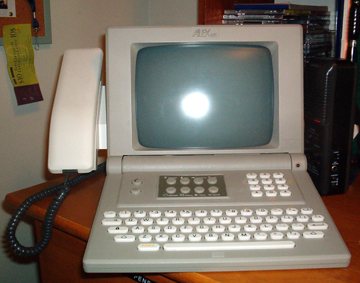In the Year 1982

Technology moves quickly. Things that, early on, look like winners, often die out soon thereafter. In 1996, Altavista was probably the leading Internet search engine; just a few years later, it was rendered obsolete by Google. Microsoft Encarta debuted in 1993 and looked to be the encyclopedia of the future — it severely damaged Britannica’s value within three years — but in 2001, Wikipedia emerged and by 2009, Encarta was discontinued. And MySpace, purchased by News Corp. in 2005 for $580 million due to its role as the leading social network of the time, was sold by News Corp. just six years later — for $35 million.
If there’s any lesson to be learned from the above, it’s that it is very hard to predict how consumers and technology will mesh in the future.
But thirty years ago today — June 14, 1982 — the National Science Foundation (NSF) tried to do that anyway. Their bet? An emerging piece of technology called Videotex would revolutionize everything.
They were, of course, wrong.
Videotex was a centralized communication system whose nascent years — the late 1970s and early 1980s — corresponded heavily with the decentralized Internet. From a consumer’s standpoint, Vidoetex seems a lot like a rudimentary form of email. The terminals — typically proprietary technology which looked like a mix between a computer and a fax, as seen above — were capable of sending and receiving text very quickly (by 1970s standards) even over long distances. It had the chance to revolutize communications much in the same way email, and the Internet as a whole, has. In fact, AT&T and Knight-Ridder newspapers heralded Videotex as something that would exceed “the greatest developments of mankind” capable of “dramatically changing the lives of entire civilizations” in this promotional video from 1983 — “a breakthrough which will change the very way in which we live.”
The NSF was keen to this concept but overstated things a bit. The report, recounted by the New York Times, hailed Videotex as something out of this world. Per the Times, the NSF predicted that Videotex would allow for “home-based shopping,” which we have, but “will permit consumers to control manufacturing directly, ordering exactly what they need for ‘production on demand.'” The study implied an odd sort of censorship regime would emerge, as “information brokers” would monitor corporations and governments alike and “selectively release” information to “interested parties.” And the U.S.’s two party political system may even be a casualty of this technology; the paper predicted that “Videotex might mean the end of the twoparty [sic] political system, as networks of voters band together to support a variety of slates – maybe hundreds of them.”
And all of this would occur by the year 1998.
But the study was, compared to what we’d expect, not too far off. Other than correctly noting that e-commerce would emerge, the NSF correctly predicted the rise of telecommuting, the advent of social networks (“Friends, peer groups and alliances will be determined electronically”), and that individuals would be able to start their own newspapers, books, and course work. While they, again, believed Videotex would be the harbringer of such advancements, well, nobody’s perfect. Videotex was effectively obsolete by the late 1980s, but the technology promises it made have been, in large part, accomplished in other ways.
Bonus fact: The 1982 World’s Fair, held in Knoxville, Tennessee and familiar to most Simpsons fans, aimed to usher in the future by bringing the world together. The Fair was expected to bring in $5 million in profit; it brought in net profits of $57. Not $57 million. Fifty seven dollars.
From the Archives: The Oldest Emoticon: The Internet brought us the :) type of smiley faces known as “emoticons” — and the first one, officially, was sent in 1982. But unofficially? Credit may be due to the New York Times, which may have used one 120 years earlier while covering a speech by Abraham Lincoln.
Related: Want to read the full NSF study? It’s about 300 pages but available for under $1 (plus shipping, used), here.

Leave a comment